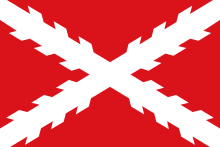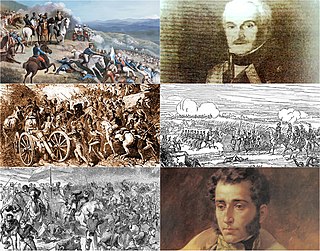
The Ecuadorian War of Independence, part of the Spanish American wars of independence of the early 19th century, was fought from 1820 to 1822 between Spain and several South American armies over control of the Real Audiencia of Quito, a Spanish colonial jurisdiction which later became the modern Republic of Ecuador. The war ended with the defeat of the Spanish forces at the Battle of Pichincha on May 24, 1822, which brought about the independence of all the lands of the Real Audiencia of Quito.

The United Provinces of New Granada was a country in South America from 1810 to 1816, a period known in Colombian history as la Patria Boba. It was formed from areas of the New Kingdom of Granada, roughly corresponding to the territory of modern-day Colombia. The government was a federation with a parliamentary system, consisting of a weak executive and strong congress. The country was reconquered by Spain in 1816.
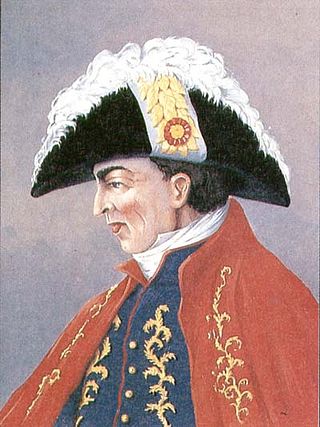
Juan José Francisco de Sámano y Uribarri de Rebollar y Mazorra, was a Spanish military officer and the last viceroy of New Granada from March 9, 1818 to August 9, 1819, during the Colombian War of Independence.

The Real Audiencia of Quito was an administrative unit in the Spanish Empire which had political, military, and religious jurisdiction over territories that today include Ecuador, parts of northern Peru, parts of southern Colombia and parts of northern Brazil. It was created by Royal Decree on 29 August 1563 by Philip II of Spain in the city of Guadalajara. It ended in 1822 with the incorporation of the area into the Republic of Gran Colombia.

Antonio Villavicencio y Verástegui was a statesman and soldier of New Granada, born in Quito, and educated in Spain. He served in the Battle of Trafalgar as an officer in the Spanish Navy with the rank of Second Lieutenant. He was sent as a representative of the Spanish Crown to New Granada, where his arrival was used as an excuse in Santafé de Bogotá to start a revolt; this was known as the Florero de Llorente, which culminated in the proclamation of independence from Spain. After this incident he resigned his office and joined the cause of independence. He was later captured and became the first martyr executed during the reign of terror of Pablo Morillo.

The Colombian Declaration of Independence occurred on July 20, 1810 when the Junta de Santa Fe was formed in Santa Fe de Bogota, the capital of the Spanish colonial Viceroyalty of New Granada, to govern the territory autonomously from Spain. The event inspired similar independence movements across Latin America, and triggered an almost decade-long rebellion culminating in the founding of the Republic of Colombia, which spanned present-day Colombia, mainland Ecuador, Panama, and Venezuela, along with parts of northern Peru and northwestern Brazil.
This is a timeline of events related to the Spanish American wars of independence. Numerous wars against Spanish rule in Spanish America took place during the early 19th century, from 1808 until 1829, directly related to the Napoleonic French invasion of Spain. The conflict started with short-lived governing juntas established in Chuquisaca and Quito opposing the composition of the Supreme Central Junta of Seville. When the Central Junta fell to the French, numerous new Juntas appeared all across the Americas, eventually resulting in a chain of newly independent countries stretching from Argentina and Chile in the south, to Mexico in the north. After the death of the king Ferdinand VII, in 1833, only Cuba and Puerto Rico remained under Spanish rule, until the Spanish–American War in 1898.
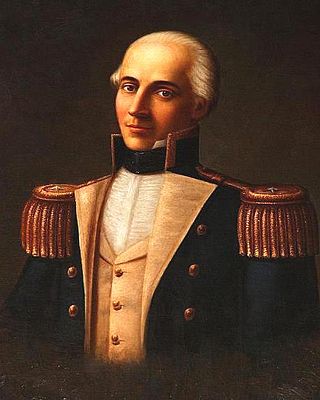
Juan de Salinas was a Spanish officer in the latter days of the colonial period in what is now Ecuador. He played a key role in the independence movement as the first military leader of the patriotic militias.

The National Order of San Lorenzo was established as a military order medal by the President of the First Revolutionary Government of Quito, Juan Pío Montúfar, II Marquis de Selva Alegre, by a decree issued on August 17, 1809, in the Capitulate Hall of the Convent of San Agustín. All the members of the revolutionary Council were decorated with it. Once the Council disappeared and the power returned to Spanish hands, the Order also ceased for more than a century.

Rosa de Montúfar y Larrea-Zurbano was a noblewoman and aristocrat from Quito, the daughter of Juan Pío Montúfar and a prominent hero of the Ecuadorian War of Independence.

Rosa Zárate y Ontaneda, also known simply as Rosa Zárate, was an Ecuadorian feminist involved in the Ecuadorian independence movement during the 19th century.

The October 9 Revolution was a successful revolt against the Spanish Empire in Guayaquil on October 9, 1820. It was led by the General Antonio José de Sucre and directed by Simón Bolívar. The revolt established a revolutionary junta and created the Free Province of Guayaquil, an independent state. The independence of Guayaquil revived the war of independence of the Real Audiencia de Quito as part of the Spanish American wars of independence. Prominent events in the revolution include the uprising of the Spanish garrison in the city of Guayaquil and the control of the Pacific by the Liberating Expedition of Peru, under the command of José de San Martín.
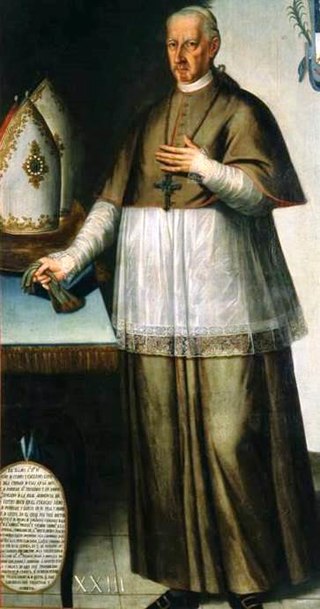
José de Cuero y Caicedo was a bishop and politician who served as President of Ecuador, Vice President of Sovereign Board of Quito, Bishop of Roman Catholic Archdiocese of Quito, and Roman Catholic Archdiocese of Cuenca.

Carlos de Montúfar y Larrea-Zurbano was a Creole nobleman and soldier considered one of the liberators of current Ecuador. He fought alongside Simón Bolívar and was nicknamed El Caudillo.

Juan Pío de Montúfar y Larrea, II Marquis de Selva Alegre, was a statesman and political figure during the struggle for independence from Spain in Latin America.
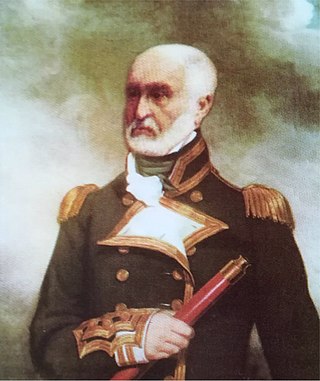
Manuel Ruiz Urriés de Castilla, I Count of Ruiz de Castilla, was a brigadier of the Royal Army of Spain and a public official of the Spain crown in South America. He held the positions of Mayor of the Mines of Huancavelica, Governor General of Cuzco, and President of the Real Audiencia of Cusco (1793–1806) and of the Real Audiencia of Quito (1807–1812).
The First Battle of Ibarra occurred in the vicinity of the city of Ibarra, Ecuador, between 27 November and 1 December 1812. The event, which is part of the Spanish American Wars of Independence, pitted the troops of the State of Quito against those of the Spanish Empire. The battle was a decisive victory for the Spanish and resulted in the disappearance of the short-lived nation that had been born in the territory of the Royal Audiencia of Quito, after the Quito revolt of 10 August 1809, which had declared itself independent from Spain on 11 October 1811.

The Battle of Camino Real, was the first battle in the Ecuadorian War of Independence, that took place on 9 November 1820. The battle was fought between Royalist soldiers in support of the Spanish Empire, and the Patriot forces of the Free Province of Guayaquil, who won the battle.

The Pasto Campaign was a series of military operations carried out between 1822 and 1824 by Gran Colombia against the Royalist strongholds of San Juan de Pasto and Patía, Cauca in present-day Southern Colombia.

The Intendancy of Cuzco, also known informally as Cuzco Province, was one of the territorial divisions of the Viceroyalty of Peru, ruled from the city of Cuzco and under the jurisdiction of the Bishopric of Cuzco.

